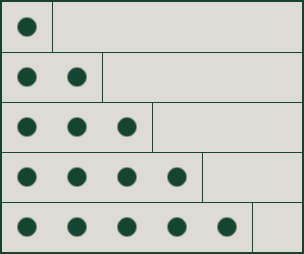So I was looking at this code from a textbook:
for (int i=0; i<N; i++)
for(int j=i+1; j<N; j++)
The author stated that the inner for-loop iterates for exactly N*(N-1)/2 times but gives no basis for how he arrived to such an equation. I understand N*(N-1) but why divide by 2? I ran the code myself and sure enough when N is 10, the inner loop iterates 45 times (10*9/2).
I messed around with the code myself and tried the following (assigned only i to j):
for (int i=0; i<N; i++)
for(int j=i; j<N; j++)
With N = 10, this results in 55. So I'm having trouble understanding the underlying math here. Sure I could just plug in all the values and bruteforce my way through the problem, but I feel there is something essential and very simple I'm missing. How would you come up with an equation for describing the for loop I just constructed? Is there a way to do it without relying on the outputs? Would really appreciate any help thanks!
